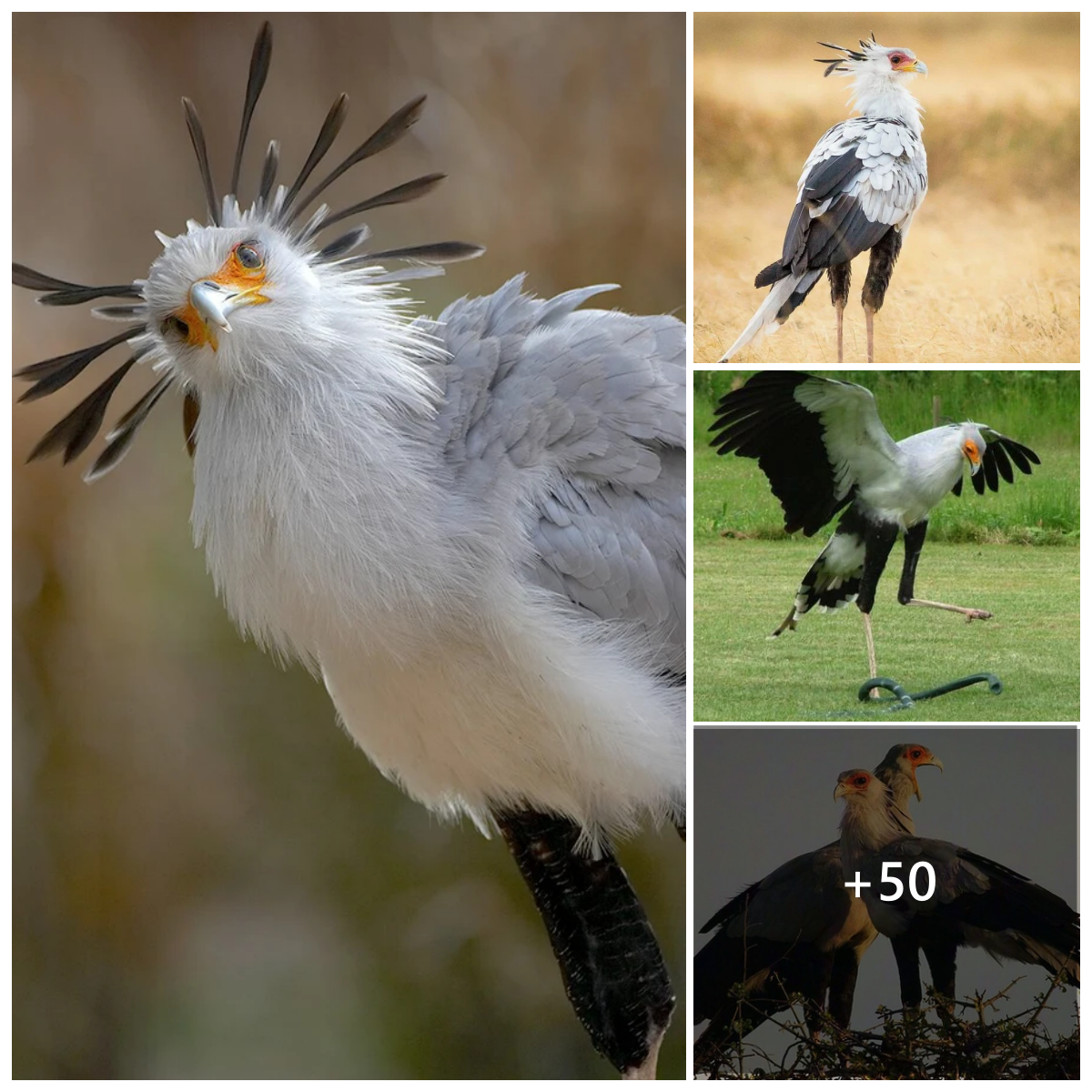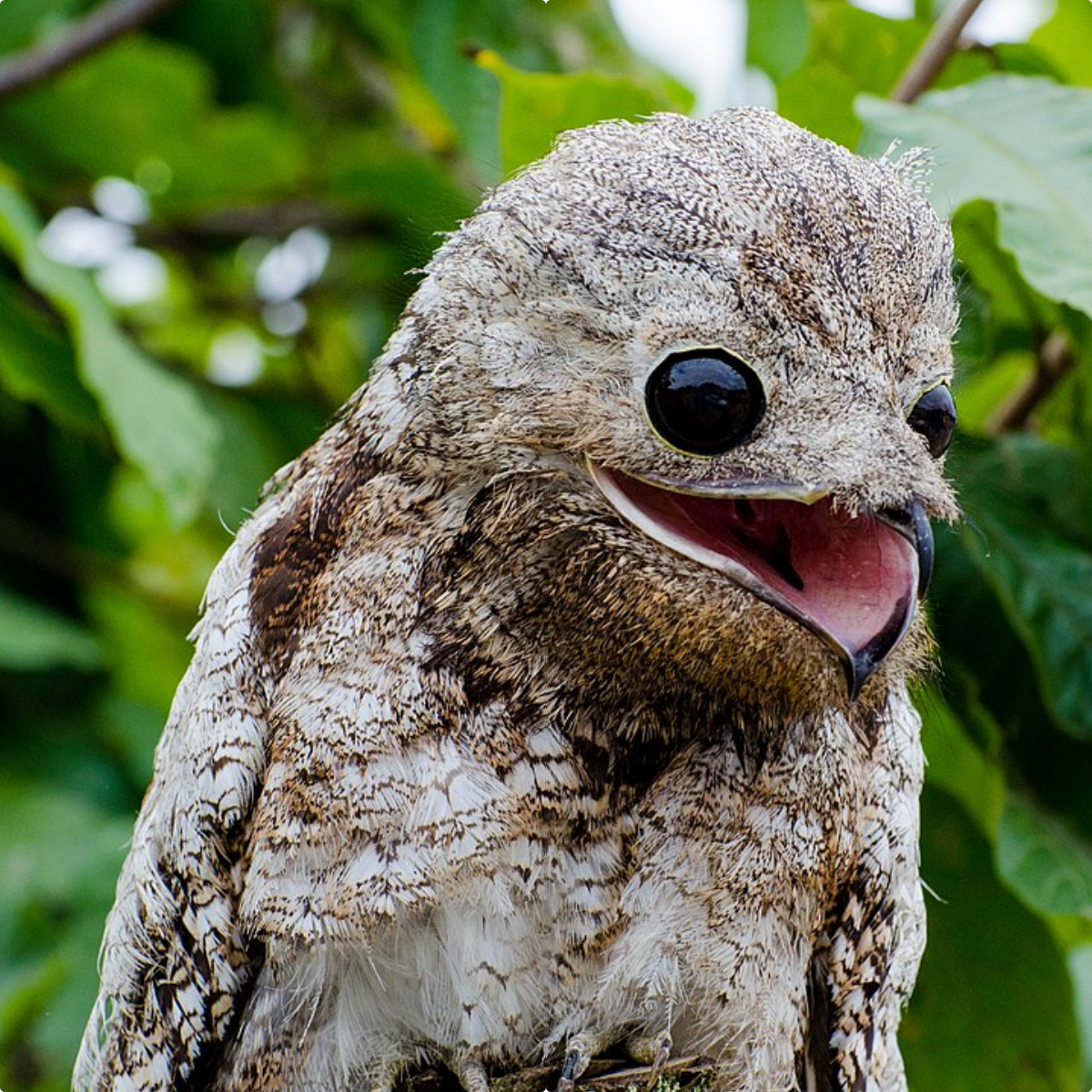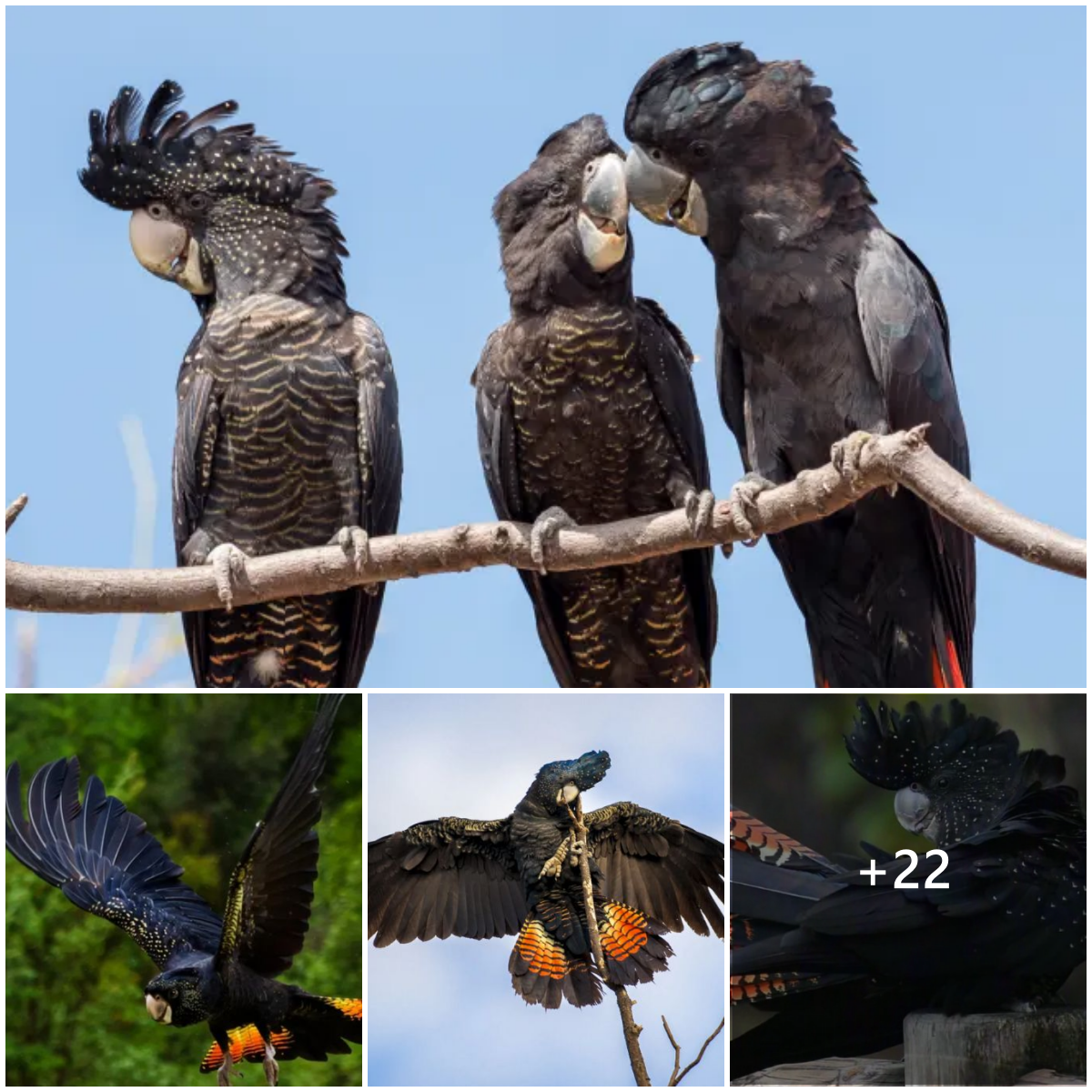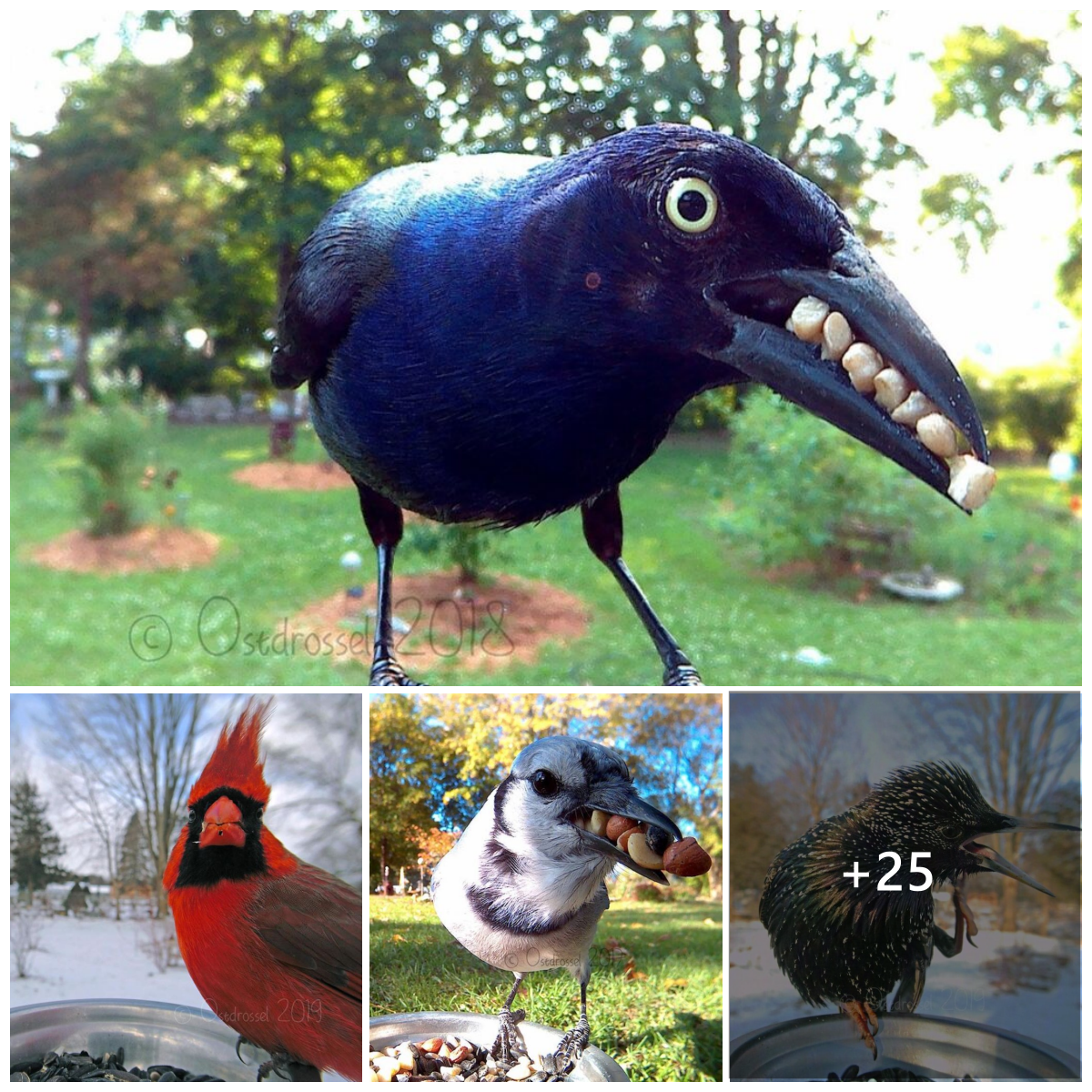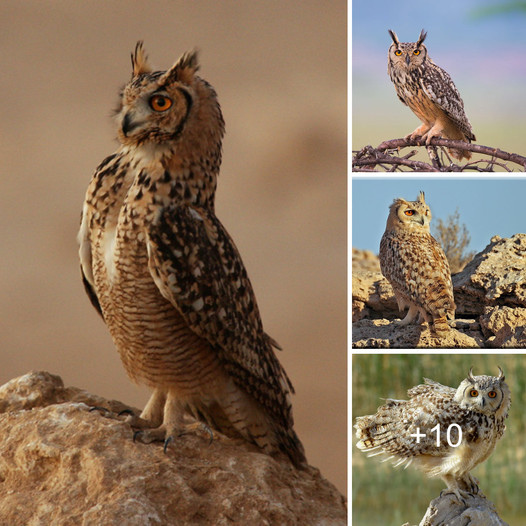Like bats, bees, and other insects, hummingbirds are important pollinators. And with their brilliant colors, rapidly fluttering wings, and rapier-like bills, they fulfill their ecological duties with immense grace and flair. There are more than 300 species of hummingbirds, and more than 60 are either near threatened, vulnerable, endangered, or critically endangered.
With so many species existing within the Trochilidae family, it’s no surprise that the “unfooted” birds—called so because of their inability to walk on ground—vary greatly in size, shape, and coloration.
Here are some of the strangest and most beautiful hummingbirds.
1.Rufous-Breasted Hummingbird

The rufous-breasted hermit (Glaucis hirsutus), also called a hairy hermit, is a picky eater. It will only feed from flowers whose corolla (the whorl of petals that leads down into the nectaries) length and curvature exactly matches that of its bill. Interestingly, the males and females have differently shaped bills, an evolutionary trait that researchers think cuts down on food-related competition.1
These birds are bronze-green with undersides that are colored reddish-brown (a color which also happens to be called “rufous”). They have a broad distribution from Panama throughout the Caribbean.
2.Long-Tailed Sylph
 Ondrej Prosicky / Getty Images
Ondrej Prosicky / Getty ImagesMale long-tailed sylphs (Aglaiocercus kingii) have amazingly long tails, around five inches in length. They are so long that they actually hamper the birds’ flight, requiring males to be especially strong and skilled fliers to survive to breeding age.2 Females choose their mates based on the size of those tail feathers, as they are a symbol of strength and fitness.
Males also exhibit a stunning iridescent blue and green coloring. Long-tailed sylphs prefer high elevations. They occur most commonly in the Andes, from Venezuela to Bolivia.
3.Rufous-Crested Coquette
 Quynh Ton / 500px / Getty Images
Quynh Ton / 500px / Getty ImagesCoquettes are some of the smallest species of hummingbird, and the rufous-crested coquette (Lophornis delattrei) measures only about 2.5 inches in length and weighs less than .1 of an ounce.3 Both sexes are identifiable by their reddish-brown-colored foreheads, but males have more distinguishable, spiky crests and iridescent green necks. They occur throughout southern Central America and the Pacific coast side of South America. These birds are omnivorous, subsisting on flower nectar and small arthropods.
4.Ruby-Topaz Hummingbird
 Chelsea Sampson / Getty Images
Chelsea Sampson / Getty ImagesAlthough ruby-topaz hummingbirds (Chrysolampis mosquitus) are dainty—weighing only .12 of an ounce—the males can be quite aggressive when defending their territories from competitors. These birds inhabit open country and gardens throughout northern South America, southern Panama, and Trinidad. Males have glossy red crowns and napes and green-glossed brown upper parts, whereas females are a little less colorful and have green throat streaks.
5.Anna’s Hummingbird
 bmse / Getty Images
bmse / Getty ImagesAnna’s hummingbird (Calypte anna) is one of the most common hummingbirds on the Pacific Coast.4 These birds exhibit fascinating courtship dances consisting of the males—who have magenta crowns—repeatedly flying up to 130 feet into the sky and then diving down at alarming speeds. Anna’s hummingbirds are also known for being especially vocal. While courting females, males will sing long, buzzy songs. It is a hardy bird, remaining all winter along the U.S. Pacific coast and as far north as British Columbia, even when all other hummingbirds have migrated south.5
6.White-Booted Racket-Tail Hummingbird

neil bowman / Getty Images
White-booted racket-tail hummingbirds (Ocreatus underwoodii) are known for their wispy leg puffs—”booties”—and two elongated tail feathers ending in iridescent, racket-like flares. Only males have the latter feature. Because the white-booted racket-tail hummingbird can reach into the long tubular flowers that exclude bees or butterflies from access, many flowering plants in their native South America rely on the species for pollination.
7.Cinnamon Hummingbird
 Ondrej Prosicky / Getty Images
Ondrej Prosicky / Getty ImagesThe cinnamon hummingbird (Amazilia rutila)—clearly named for its color—is a long-winged variation endemic to western Mexico and down to northwestern Costa Rica. It thrives in dry forests, and is sometimes even spotted as far north as Texas and the southwest U.S. Besides its medium-brown underside, the bird can be identified by its dark wings and red, black-tipped bill.
8.Green Hermit
 Dewald Reiners / Getty Images
Dewald Reiners / Getty ImagesThe green hermit (Phaethornis guy) is one of the larger hummingbird species, measuring about 5.3 inches in body length.6 The males have shorter tails than the females—a rarity among bird species, where males tend to be showier—but they still proudly wiggle their white-tipped tail feathers during competitive displays with other males as they vie for potential mates. Their distribution ranges from southern Central America to northern South America.
9.Rufous-Tailed Hummingbird
 KenCanning / Getty Images
KenCanning / Getty ImagesNot to be confused with the rufous-breasted hermit, the rufous-tailed hummingbird (Amazilia tzacatl) exhibits its namesake brilliant red on its tail rather than its chest. This is a common bird to find on riverbanks and woodlands from east-central Mexico all the way south through western Ecuador. It occurs everywhere from open country to forest edges and even coffee plantations. It also loves to feed on the flowers of banana trees. Highly aggressive about defending its feeding territory, the rufous-tailed hummingbird is usually the dominant hummingbird in its area.7
10.Brown Violetear
 Doug Cheeseman / Getty Images
Doug Cheeseman / Getty ImagesThe brown violetear (Colibri delphinae) may appear drab on the surface, but it sports some vivid iridescent feathers under its throat and over its ears, hence the name. Males flare their bright violet feathers out while performing an elaborate, U-shaped courtship dance around females. They can be found in the canopy of rain forests, in tall second growth forests, and in coffee plantations. In fact, plantations that use shade-growing methods help birds (and other native pollinators) thrive by providing both a food source and the shrubby habitat needed for shelter and breeding. The males establish feeding territories and aggressively chase away any rivals, whether they’re other birds or large insects like bumblebees or hawkmoths.8
11.Green Crowned Brilliant

Simon Marlow / EyeEm / Getty Images
The emerald green-crowned brilliant (Heliodoxa jacula) is one of the larger hummingbird species—just over five inches in length—and is found in highlands from Costa Rica to western Ecuador.9 While most hummingbird species hover over flowers while feeding, the green crowned brilliant almost always perches on the flowers as it drinks their nectar. Males differ from females in their violet-blue throat patches, white thighs, and deeply forked tails.
12.Chestnut-Breasted Coronet
 Hal Beral / Getty Images
Hal Beral / Getty ImagesThe chestnut-breasted coronet (Boissonneaua matthewsii) is admired for the striking contrast between its rufous-colored underbody and the bright green along its head and back. Its beak is thick and straight. One of its other signature traits, it holds its wings upright over its back immediately after landing on a new perch. The chestnut-breasted coronet can be found on the eastern slopes of the Andes mountains.
13.White-Crowned Hummingbird
 Christopher Jimenez Nature Photo / Getty Images
Christopher Jimenez Nature Photo / Getty ImagesAlso known as snowcaps, white-crowned hummingbirds (Microchera albocoronata) are called so because of the colorless patches that males have on their heads. Females lack this identifiable trait and are more bronze-green compared to the males’ deep purple. Despite their standout features, snowcaps are difficult to find as they are extremely localized (found only in Central American cloud forests) and do not visit feeders. They are only 2.5 inches long and weigh less than a penny, further complicating human search efforts.
14.Ecuadorian Hillstar
 Daniel A. Leifheit / Getty Images
Daniel A. Leifheit / Getty ImagesThe Ecuadorian hillstar (Oreotrochilus chimborazo) lives at high altitudes in the Andes, feeding along the slopes right up to the snow line. Because these birds live in such cold areas year-round, they conserve energy by taking shelter in protected roosts and going into torpor (a state of lowered metabolic rate, heart rate, oxygen intake, and body temperature) at night.
15.White-Necked Jacobin Hummingbird
 Christopher Jimenez Nature Photo / Getty Images
Christopher Jimenez Nature Photo / Getty ImagesIt’s hard to miss a male white-necked jacobin hummingbird (Florisuga mellivora), with its bright white belly, majestic tail, and royal blue head. They are found between Mexico and south Brazil, all the way to the Caribbean island of Trinidad and Tobago. Like many hummingbird species, this one feeds not only on nectar and small insects, from which it gets its protein. It catches bug prey by snatching it in mid-air, a technique called “hawking.”
16.Velvet-Purple Coronet

Juan Carlos Vindas / Getty Images
The velvet-purple coronet (Boissonneaua jardini), native to the humid foothill forests of western Colombia and northwestern Ecuador, has such a rich coloration it may appear black at first, particularly if it’s dark outside. When the light catches its iridescent plumage, though, flashes of vivid purple, blue, and green appear. The underparts of its wings are a contrasting chestnut color.
17.Green-Throated Mango
 Stephen Horvath / Flickr / CC BY-ND 2.0
Stephen Horvath / Flickr / CC BY-ND 2.0The green-throated mango (Anthracothorax viridigula) loves mangrove and swamp forests, and can be found along a narrow strip of the Atlantic Coast along the north and south of the Amazon river outlet. Though there is still much to be discovered about the species, it is known that its Trinidad population is on the decline due to the loss of swamp and mangrove habitat.10 The International Union for Conservation of Nature and Natural Resources still lists it as a species of least concern.11
